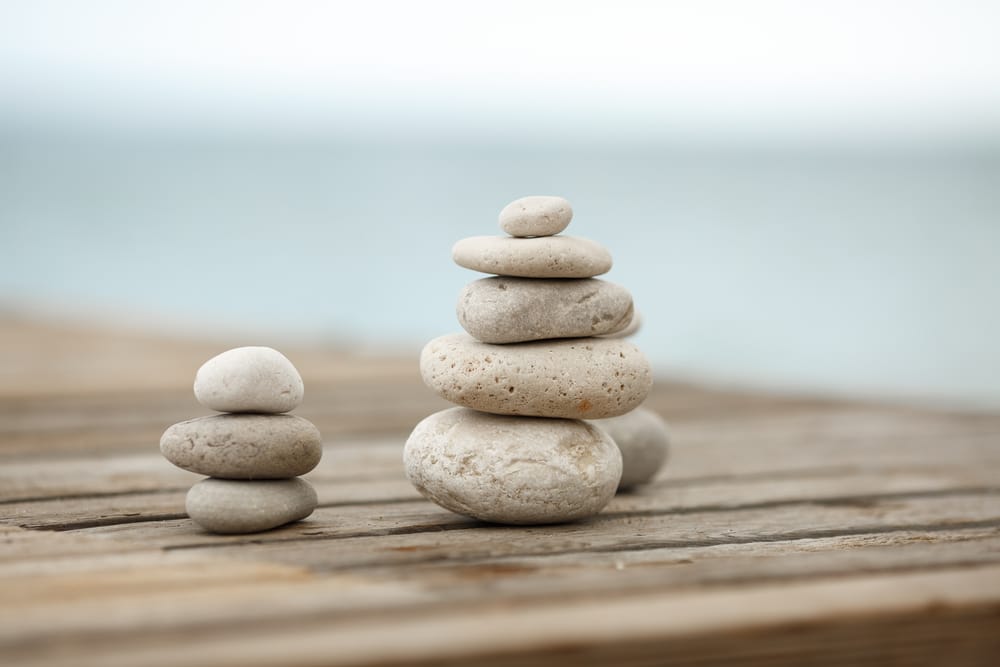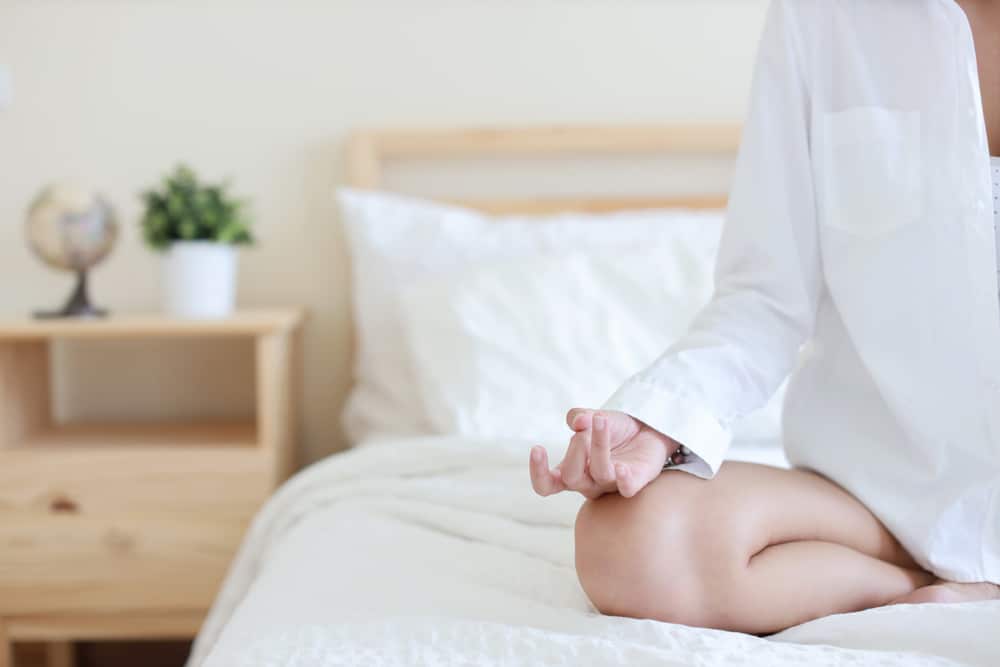Imagine this scenario: it’s late at night and you’re sitting in bed tossing and turning with a million thoughts racing around your head. You’re thinking about all the things you have to do the next day, and you suddenly worry how you’ll meet all your deadlines at work or school. But more importantly, you wonder how you’ll fall asleep with such an anxious mindset. Sound familiar? If so, you might want to learn how to meditate in bed before you hit the hay.
Meditation is a fairly common practice. If you poke around on the Internet, you can find tons of guided meditation YouTube videos aimed to help you relax and fall asleep. On the clinical side, meditation is common in the therapist’s office, too. Plenty of mental health professionals use it to treat a variety of disorders, including anxiety and depression that can also result in sleep problems, like insomnia.
But when it comes to how to meditate in bed, you’re going to want to know a few basic steps to get you started. No matter how late past your bedtime it is, the tips below will serve as useful tricks that’ll have you falling asleep in no time.
Getting Started

First you must decide how you’d like to meditate: with or without guidance. If you’d prefer someone else like a narrator to lead your meditation, then you can download a free mobile app from the app store. There are plenty of apps out there that incorporate meditation sessions to help you rest. But, if you’d prefer to use your own methods, you can do that as well.
Before you decide on how to meditate, there are a few practical steps you should take to prepare yourself:
- Complete your nightly bedtime ritual. Before you meditate, make sure you have everything ready for the next day, including completing last-minute assignments, choosing an outfit to wear to work and brushing your teeth.
- Create a comfortable environment. In order to get the most out of meditation, it’s important to make sure your surroundings don’t bring you anxiety. Create a comfortable environment by cleaning up your space, turning off the lights and adjusting the thermostat to a reasonable temperature. Invest in minimalist bedroom furniture.
- Silence your phone. Unless you plan to use a meditation app, you should silence your phone. Distractions from social media or incoming text messages or calls can disrupt your meditation. Make sure your mind is in a healthy place, too.
Meditation Techniques: Which to Use?

Now that you’re prepared to meditate, you can decide which type of meditation you’d like to use before you drift off. Most mobile apps will have all kinds of techniques, but if you’re planning on meditating without an app, it’s helpful to know which methods are out there. It’s crucial to choose a method that feels comfortable to your needs, and you can always talk to a health professional for extra guidance before trying one of the styles below.
Visualization
Most visualization techniques use heavy sensory description to transport you to a calm place. During visualization, you aim to imagine a place that brings you happiness, like a beach or your best friend’s house. The idea is to reduce any stress from the day and then bring you to a relaxed state of mind that feels safe. Visualization is somewhat similar to hypnosis. You want to focus in on that one place, time or memory.
Deep Breathing
This technique is best used if you experience nighttime anxiety that often results in an increased heartbeat and a restless mind. Deep breathing, or inhaling and exhaling slowly and mindfully, can slow down your heart rate in just a couple of minutes. Try inhaling for ten full counts, holding your breath for five and then exhaling for another ten. Do this until you feel your heartbeat slow down.
Body Scanning
Body scanning is a form of meditation that involves you mentally “scanning” your body and focusing on how each part feels. If you’re anxious, for example, a body scan can help you detect where tension resides in your body. The goal of a body scan is to regain a sense of calmness and ground yourself to the present. A body scan should last about 15-20 minutes for best results. Take your time with this method and be sure to tune into what your body is trying to tell you.
Mobile Apps
If you have an addiction to your phone, chances are it’s also a sleep-deterrent. So, why not try a meditation app? Mobile meditation apps are perfect for people who don’t know where to begin when it comes to meditation. Apps often offer technique options, too, so you can choose from guided breathing to visualization and so forth. Plus, you can usually track progress and hold yourself accountable with an app.
Does Meditation Work?

The idea of meditation sounds great, but does it really reap any benefits? Science says yes. A 2015 study published in JAMA Internal Medicine concluded that Mindful Awareness Practices (MAPs) improved participants’ sleep quality after just six two-hour sessions. The 24 participants who took part in the mindfulness awareness program demonstrated more success in reducing insomnia than the other group of 25 participants, who took part in a sleep education class.
MAPs involved listening to guided mindfulness meditation each day and slowly moving from five minutes of mindful meditation per day to 20. The sleep education class, on the other hand, simply outlined what healthy and unhealthy sleep look like and encouraged participants to practice healthy sleeping habits. [1]
So, where can mindfulness meditation be used outside of a study? Mindfulness is a common technique therapists use in Cognitive Behavioral Therapy (CBT). Now that you know how to meditate in bed, you can also practice it on your own throughout your day to keep your mind in check.
The majority of mindfulness involves staying in the present moment and quite literally being mindful and aware of your feelings and surroundings. If you feel that you would benefit from CBT or meditation in a group setting, try having a conversation with your doctor or a friend to share more about your experience with meditating.
Terms
- Mindfulness: a state of being aware of the present; a technique used in many mental health practices that involves being in the present moment and accepting what is
- Cognitive Behavioral Therapy (CBT): a type of talk therapy that uses coping techniques to reframe harmful cognitive beliefs and behaviors
References
[1] Black, D. S., O’Reilly, G. A., Olmstead, R., Breen, E. C., & Irwin, M. R. (2015). Mindfulness meditation and improvement in sleep quality and daytime impairment among older adults with sleep disturbances: a randomized clinical trial. JAMA Internal Medicine, 175(4), 494–501. Retrieved from https://www.ncbi.nlm.nih.gov/pmc/articles/PMC4407465/
Disclaimers
This article is for reference purposes only. It is not to replace or complement the advice of a licensed professional, nor is it intended to diagnose, treat, cure, or prevent any disease or condition. Any and all health concerns you have should be directed at a doctor.


